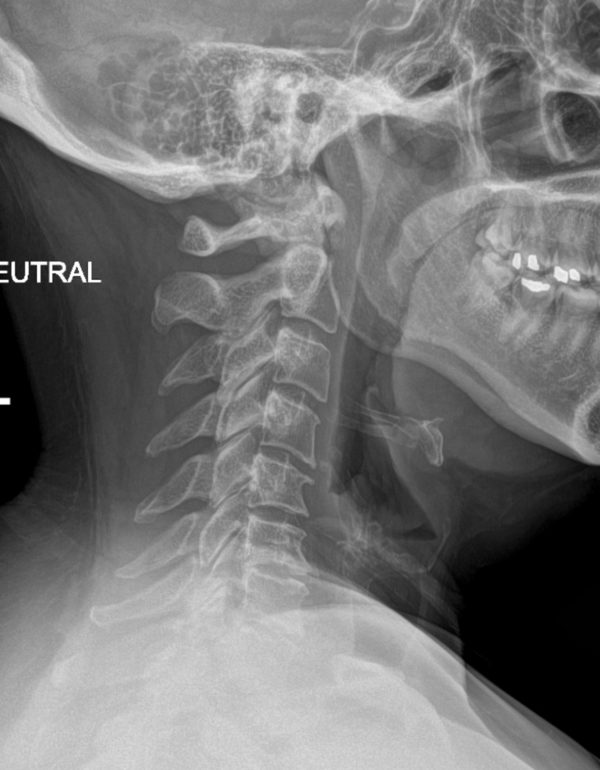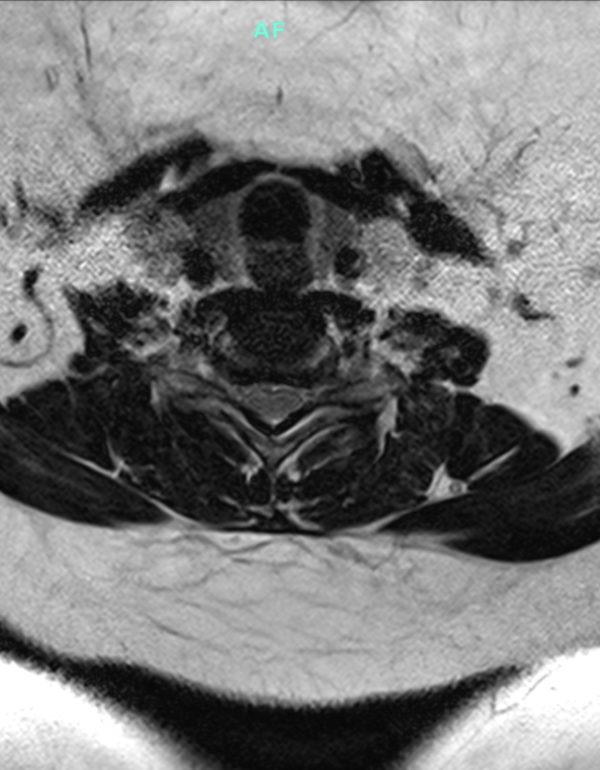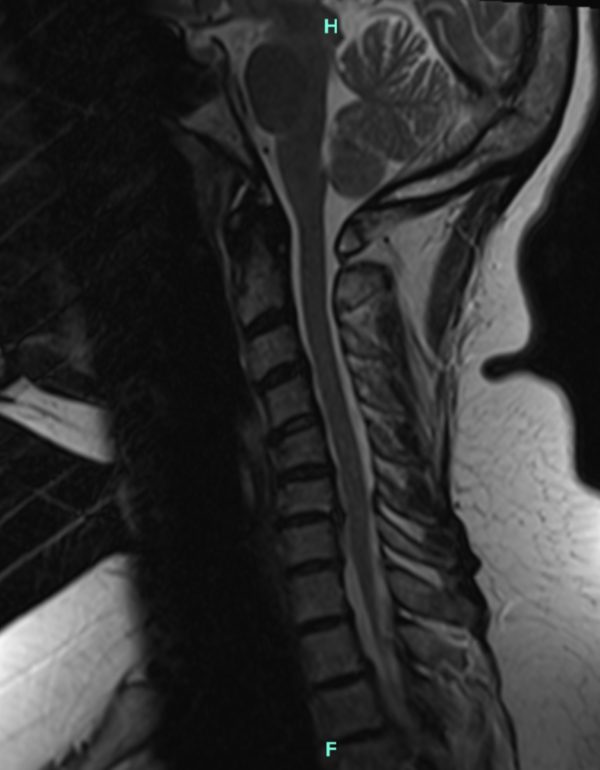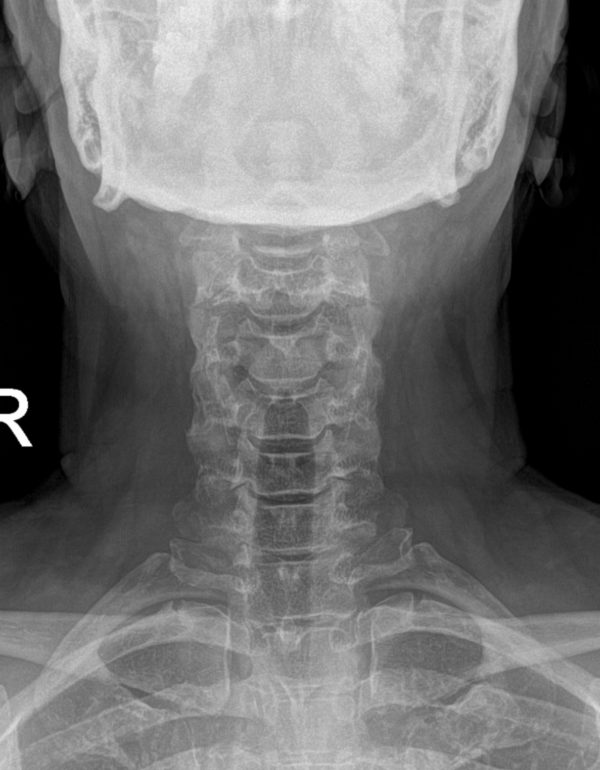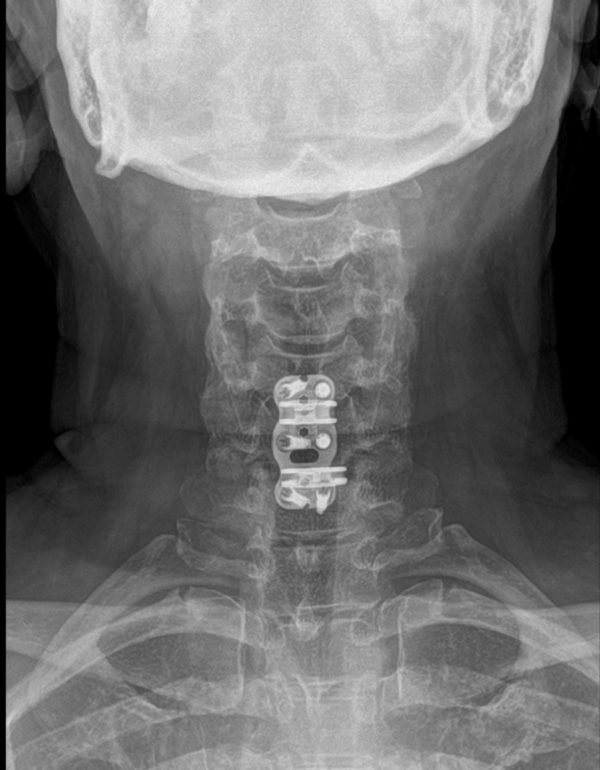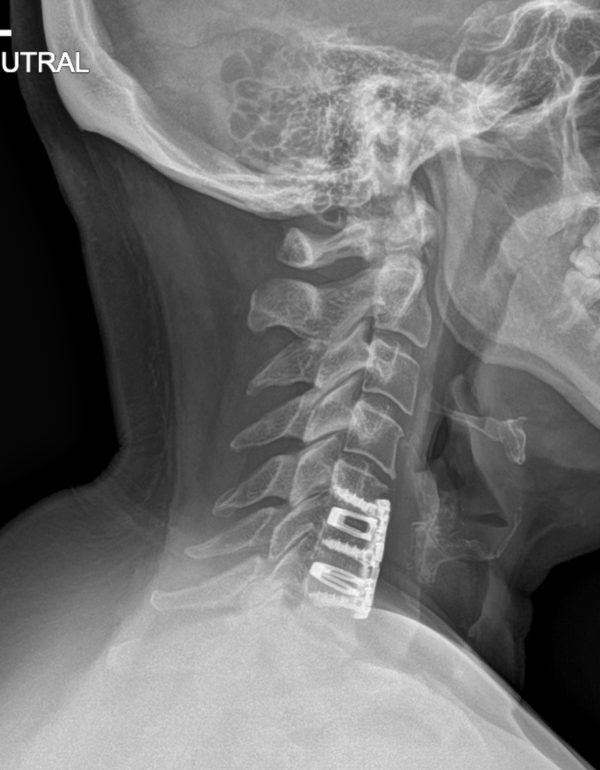The Patient
Meet Bambou. She’s a 55-year-old woman who visited Long Island spine surgeon Dr. Daniel Choi because her quality of life was suffering. For years, she had neck pain, headaches, pain that radiated down both arms (radiculopathy), coordination issues, numbness in both hands and a gait imbalance.
Bambou worked at a school library and was active at home. As her condition progressed, however, picking up objects, carrying books, turning her head to talk to people or drive a car and, eventually, even holding a pen became a challenge.
Aside from having trouble with everyday tasks, Bambou was also in severe pain. Living with constant discomfort took a toll on her physically and mentally. She felt as if her pain and symptoms were becoming the main focus of her life.
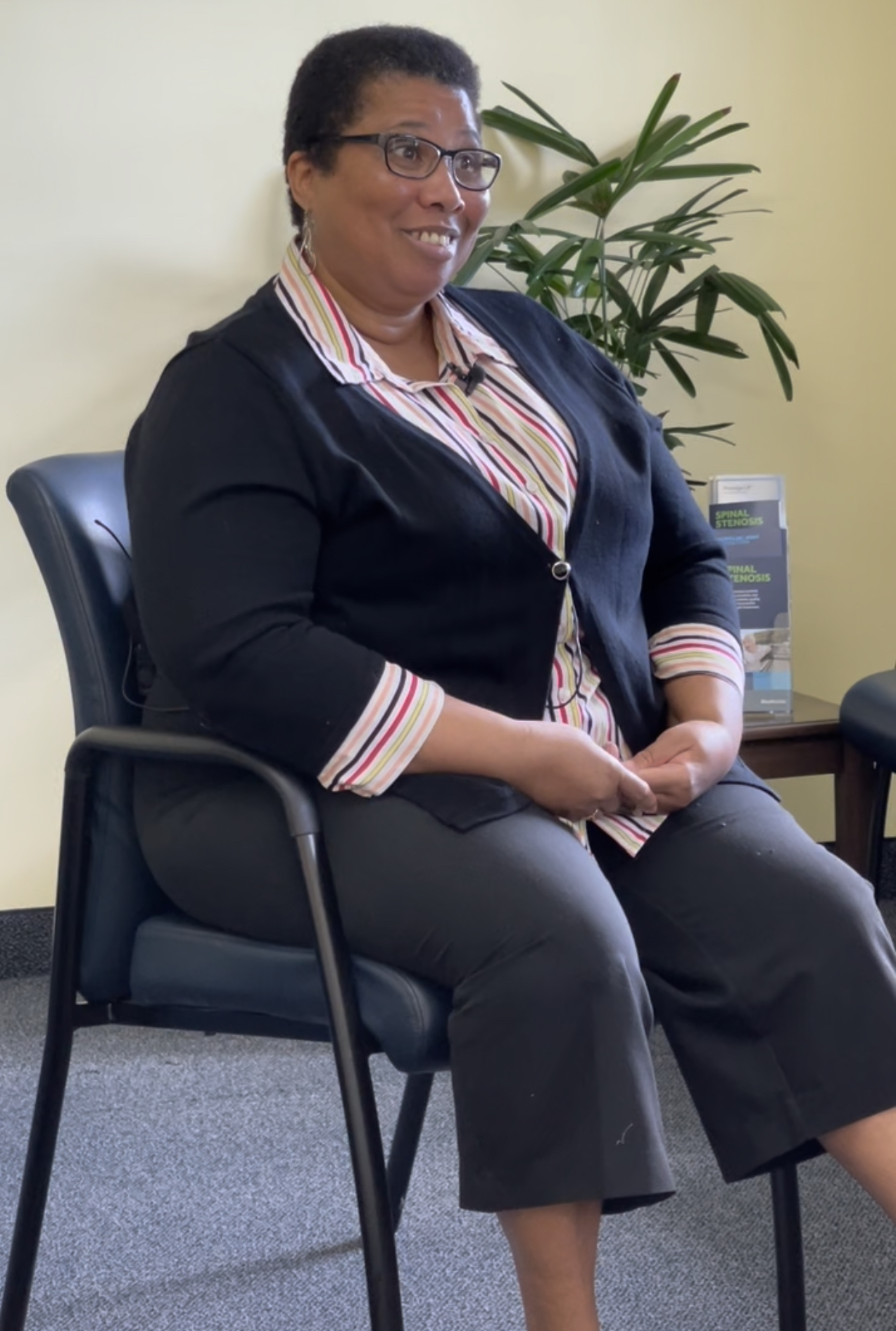
The Problem
The neck, or cervical spine, supports the head and allows you to move it side to side and up and down. With bones, nerves, joints and muscles, the structure is complex and injury, degeneration and other issues can lead to neck pain and stiffness. Cervical spine conditions can also result in pain that radiates down the arms and neurological symptoms like those Bambou was experiencing, such as headaches, numbness, tingling and loss of coordination in the arms or hands.
While acute, benign neck pain usually improves on its own, when pain and symptoms persist, it can be debilitating and indicative of an underlying condition. Since Bambou’s pain and symptoms lasted for years, at this point, the condition was chronic and she made the right decision by visiting a spine specialist.
When Bambou first met with Dr. Choi, she rated her pain an 8 out of 10. The radiculopathy, numbness in her hands, upper extremity coordination issues, headaches and gait imbalance were making even the seemingly most simple daily tasks burdensome.
The Diagnosis
Dr. Choi sat down with Bambou and talked with her about her health history and symptoms. Upon examining her, he found that she was unable to perform a tandem heel to toe gait (walking in a straight line heel to toe, similar to a field sobriety test).
The next step was ordering an MRI of Bambou’s cervical spine and an electromyography (EMG) study. The MRI showed several cervical disc herniations, with one of the disc herniations causing severe stenosis of her spinal cord. The EMG study revealed evidence of left-sided radiculopathy (nerve irritation).
What Does That Mean?
Disc Herniation
The spine is made up of a column of bones, called vertebrae, and in between the vertebrae are spongy discs that act as shock absorbers. When the gel-like center of a disc pushes or migrates out of the exterior shell into the spinal canal, we call it disc herniation, sometimes referred to as a “herniated disc,” “bulging disc,” or “ruptured disc.” The herniated disc can put pressure on the spinal cord and nearby nerves, resulting in pain and neurological symptoms.
Spinal Stenosis
Spinal stenosis is a narrowing of the spinal canal. Your spinal cord, which is a bundle of nerves, runs through the spinal canal. As space in the canal decreases, it may compress or irritate the spinal cord and nerve roots. This too can cause neck pain, and pain and symptoms in the upper extremities.
The Solution
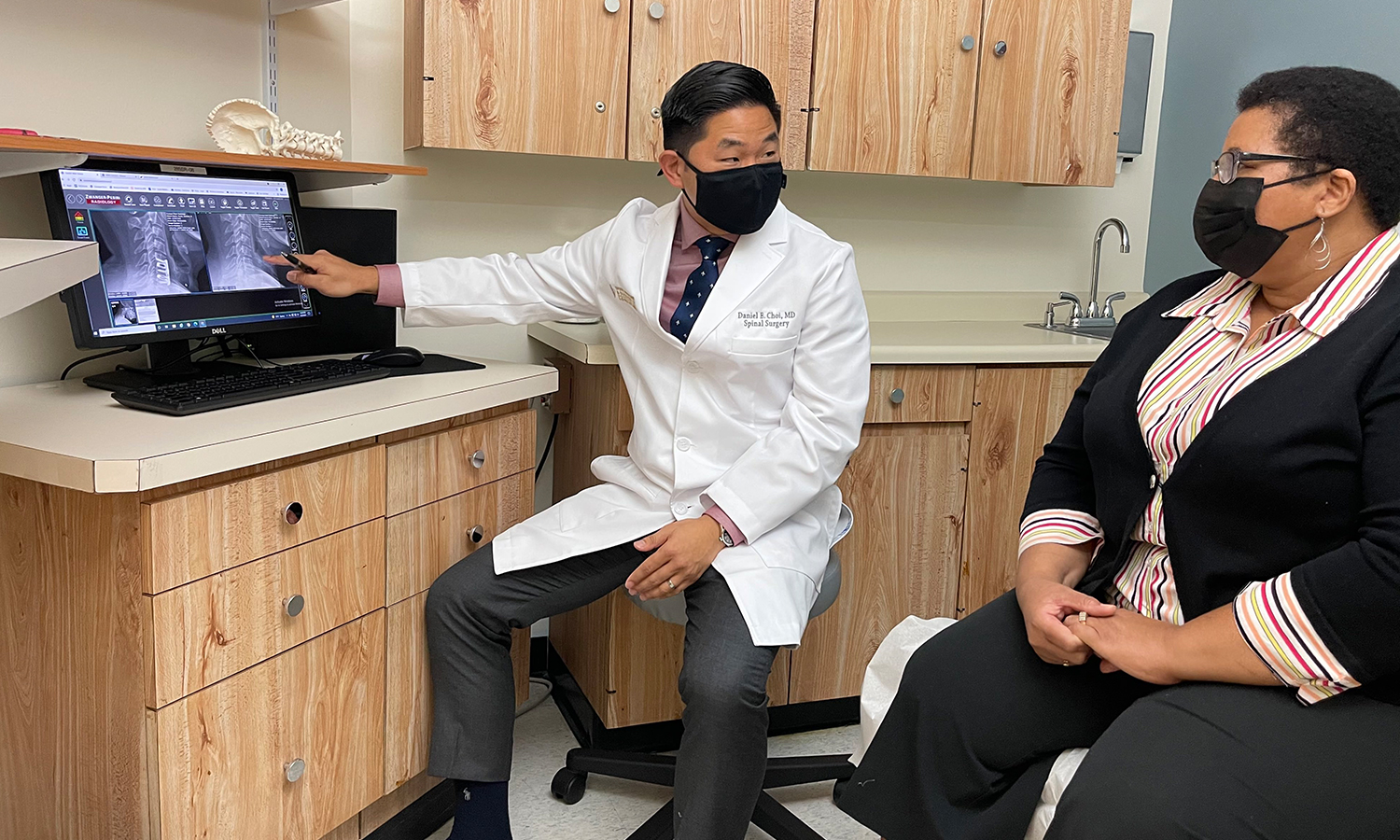
Dr. Choi specializes in minimally invasive spine care and takes a conservative approach. He had Bambou try a number of non-surgical treatment options for her neck pain, including medication, physical therapy and epidural steroid injections. Unfortunately, she didn’t experience relief.
After exhausting the non-surgical options, Dr. Choi recommended that Bambou have cervical spine surgery. He explained exactly what Bambou could expect with surgery and, together, they agreed this was the best option.
Dr. Choi performed a two-level anterior cervical discectomy and fusion C5-7 (C5-7 refers to the bottom three vertebrae of the cervical spine). Anterior cervical discectomy and fusion (ACDF) is a minimally invasive surgery. During the procedure, Dr. Choi made a small incision in the front of Bambou’s patient’s neck. He gently moved the muscle and tissue aside and removed the ruptured discs (discectomy).
Dr. Choi then filled the space with a spacer bone graft. He secured the graft with plates and screws, completing the fusion portion of the surgery. As new bone grows around the graft and hardware, it will stabilize Bambou’s neck and prevent the vertebrae from collapsing.
The Results
By removing the ruptured discs and stabilizing her neck, Dr. Choi was able to eliminate the nerve compression and pressure on the spinal cord and create more space in the spinal column. Following surgery, all of Bambou’s symptoms, including the headaches, gait imbalance, radiculopathy, numbness and coordination issues were significantly better.
Now, three months after the ACDF procedure, Bambou’s pain level has improved to a 1 out of 10. She also has near full range of motion and she’s been able to perform her daily activities without pain or disability.
The Future
While spine surgery isn’t something anyone really wants to have, Bambou is so thankful that she did it. As she continues to heal, she’s expected to have a complete restoration of function and minimal pain.
It’s easy to take everyday tasks like lifting something at work or turning your head to look at someone for granted. Yet, after years of being unable to do these things, Bambou is grateful she can get back to doing the things she loves. She is looking forward to fully reclaiming her life.



